How is it progressing? Efforts toward carbon neutrality

The Hitachi Construction Machinery Group is accelerating its efforts toward
carbon neutrality, but how far has it actually progressed?
Here’s a look at the current decarbonization state from the perspectives of low-carbon
construction machinery, mining solutions, and digital utilization.

What kind of features are available with the low-carbon construction machinery?
The key word in pursuing a low carbon footprint in construction machinery is “electric”. Hitachi Construction Machinery has been pursuing the development of electric construction machinery from the early stages by developing its first electric hydraulic excavator in 1971, and by releasing in 2006 a battery-powered mini shovel equipped with a lithium ion battery. In 2019, two new models of battery-powered mini excavators the “ZE85” and “ZE19”, were exhibited at an international construction machinery trade fair (bauma 2019) held in Germany. Subsequently, more efforts have been made into further development. Besides these, Hitachi Construction Machinery also sells hybrid excavators, wheel loaders, wired electric excavator and mining machinery that can be operated by connecting a power cable.
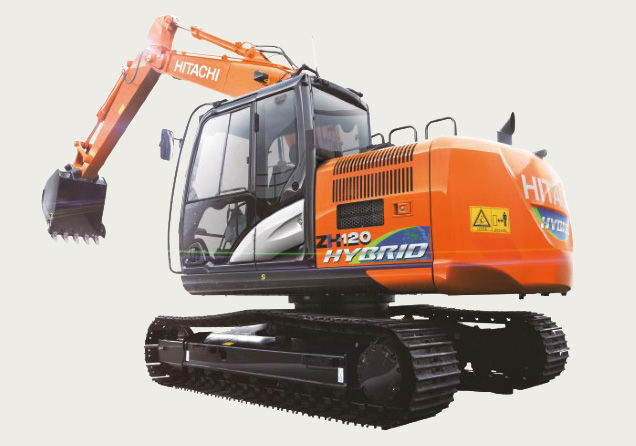
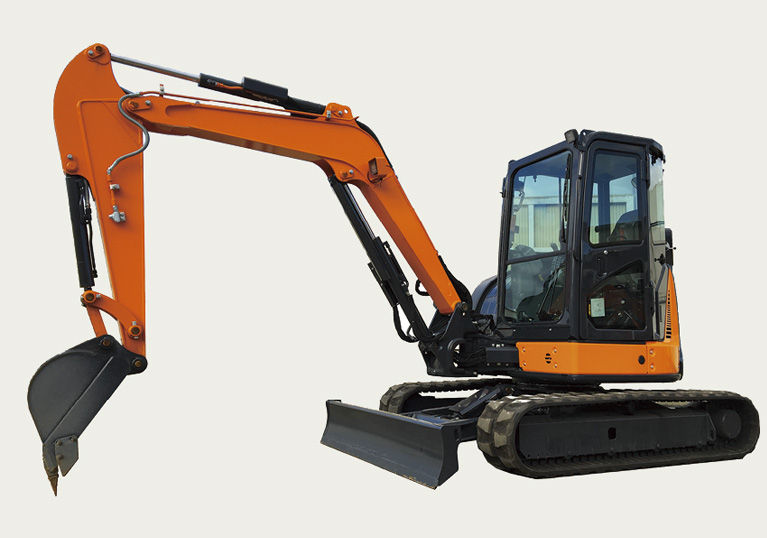
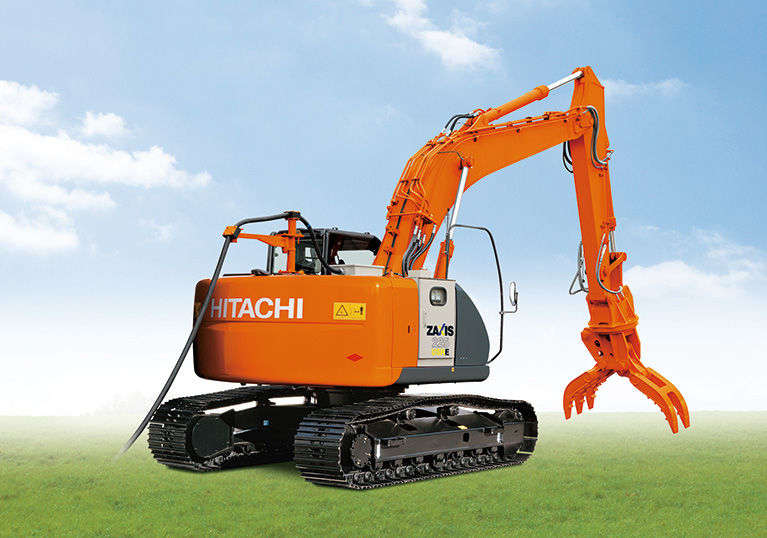
Is the introduction of low-carbon construction machinery progressing well?
The demand for low-carbon construction machinery is particularly growing in Europe where environmental regulations are strict. In Europe, the needs for such construction machinery are also following the same trend due to a ban on the sales of automobiles having internal combustion engines by 2035. In addition to the “ZE85” being adopted in the zero-emission construction site pilot project by the Norwegian government, the use of ICT construction machinery, including those running on engines, that raises work efficiency and contributes to low carbonization through automatic control is increasing. In response to the 2050 carbon neutral declaration by the Japanese government, the interest by construction and other companies in Japan is increasing, and movements to introduce low-carbon construction machinery in future using the trends in Europe as a reference can be seen.

What are the measures that Hitachi Construction Machinery is taking to reduce CO2 emissions to zero at mining sites?
Initiatives towards the decarbonization of mines are being advanced by mainly major resource companies. In mines where the scale is larger compared to urban construction works, the reduction in CO2 emissions due to large mining machinery moving around is also an important theme to Hitachi Construction Machinery. Although we already have wired and trolley-type mining machinery in our line-up, considering the productivity and constraints posed by places where work can be carried out, battery-powered mining machinery will serve as an effective answer for decarbonization. In March2021, Hitachi Construction Machinery signed a memorandum of understanding with the Swiss company ABB, which possesses electric and battery technologies, for the realization of “net zero emission mining”, which aims to essentially reduce greenhouse gas emissions from mining machinery to zero. In June, we concluded an agreement on the joint development of a fully electric dump truck in which battery charging is performed with a trolley. Going forward, we will continue to promote initiatives with the aim of achieving the same goals.
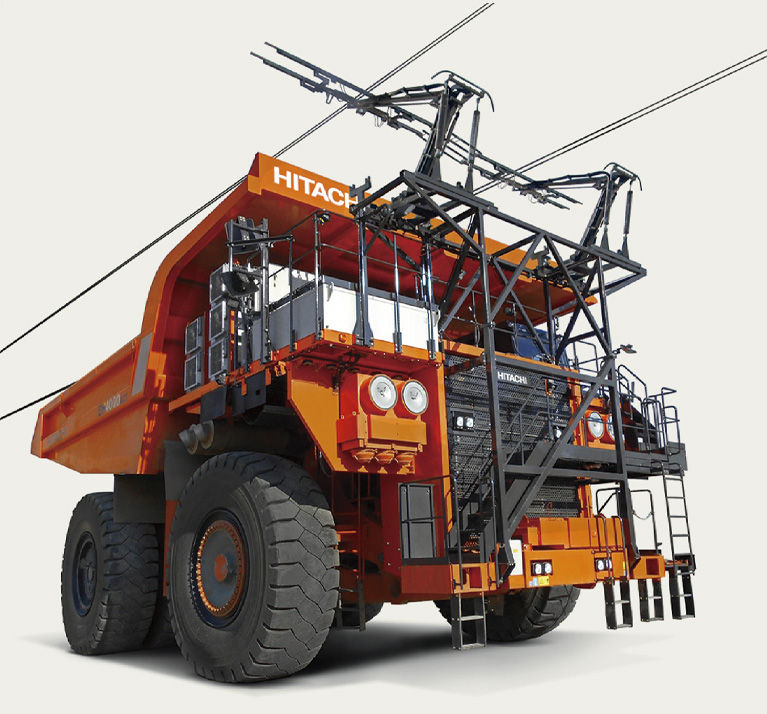

Will the use of digital technology also provide an impetus for decarbonization in the construction industry?
There is no doubt that digital technology will accelerate decarbonization. For example, work efficiency can be raised by the autonomous operation of construction machinery using ICT and IoT technology. With “ConSite Mine” launched in 2021, the driving and operation of operators can be visualized even in mines to raise productivity. As a result, CO2 emissions associated with machine operation can be reduced, imparting a positive effect on decarbonization. Monitoring is also important. If “ConSite” is introduced to monitor the operating status of the machinery, this can be useful in raising the operating efficiency and reducing the life cycle costs, thereby contributing similarly to decarbonization.
How is operating information being used to reduce the environmental burden?
The replacement timing of parts can also be made visible by “ConSite”. Although CO2 is emitted during the production process of the machinery, by managing the operating information with “ConSite” and replacing the parts at the proper timing, in essence this can reduce the manufacturing of new machinery, leading to a reduction in CO2 emissions. That is, it is possible to contribute to a reduction in the environmental load by extending the life of the product. Hitachi Construction Machinery is also focusing on recyclable parts, allowing it to contribute to the recycling of resources. Of course, this will lead to a reduction in the number of new units sold. However, as Hitachi Construction Machinery is also focusing on the sales and rental of used machinery, we believe we will be able to effectively achieve our company’s business goals together with proper consideration for the global environment.

Is it possible to reduce emissions to zero at construction sites?
Regarding mines, we have embarked on initiatives to realize “net zero emission mining”. In 2020, a zero emission construction pilot project to perform an urban construction works using only electric construction machinery was carried out in Oslo, Norway. In this project, a battery-powered excavator “ZE85” that was jointly developed by the German company KTEG and the newly established company EAC was employed. However, there are also many issues. There are far more types of construction machinery used at urban construction sites. As battery-powered construction machinery effective in decarbonization are currently high in cost, first of all, there is a need to advance mass production in future to lower the cost. Moreover, although a large number of machinery has to be employed on site, it is a fact that the hurdles in replacing all the units on site will be high unless national and other subsidies are prepared. Although the support of the Norwegian government in the current pilot project is comprehensive, the current situation is that there are differences in the level of enthusiasm towards zero emissions depending on the country.
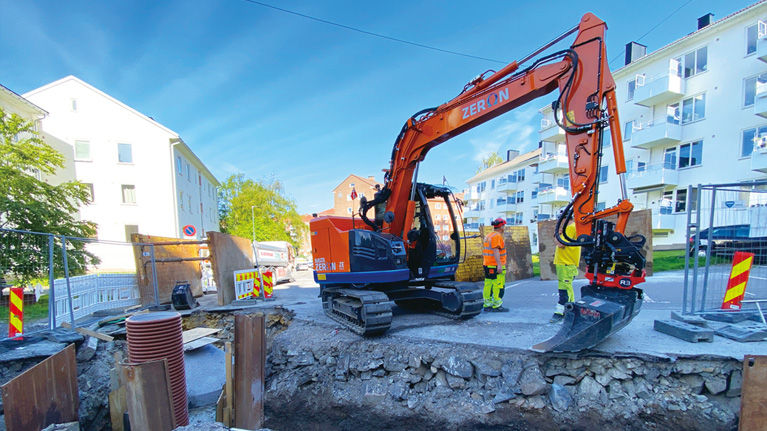
How user-friendly is batterypowered machinery?
In the construction site in Oslo, Norway where “ZE85” is used, the machinery is normally operated for 4 to 6 hours in the morning and then charged for an hour during lunch time, after which it is usually run for another 2 hours in the afternoon. As the batteries are depleted in 2 to 3 hours at full operation, the machinery is run effectively by inserting breaks or other works in between etc., thereby allowing it to be operated for 4 to 6 hours. While the “ZE85” itself can be charged easily, securing the power supply is an issue as all the machinery have to charged at the zero emission site. On the other hand, apparently it is preferred by local residents and local government because no noise is generated, and also rated highly by operators because they feel less tired than before after working.


